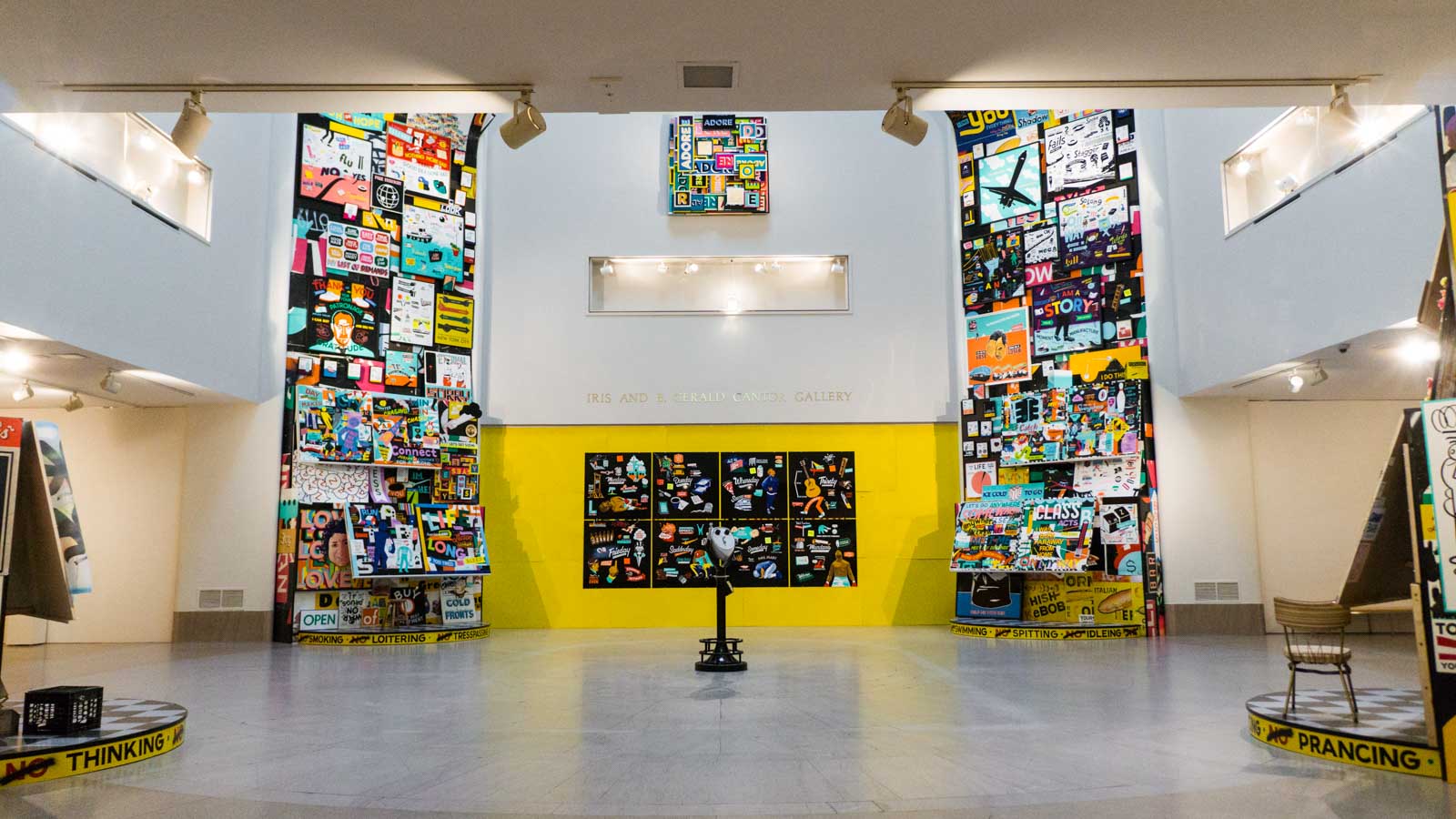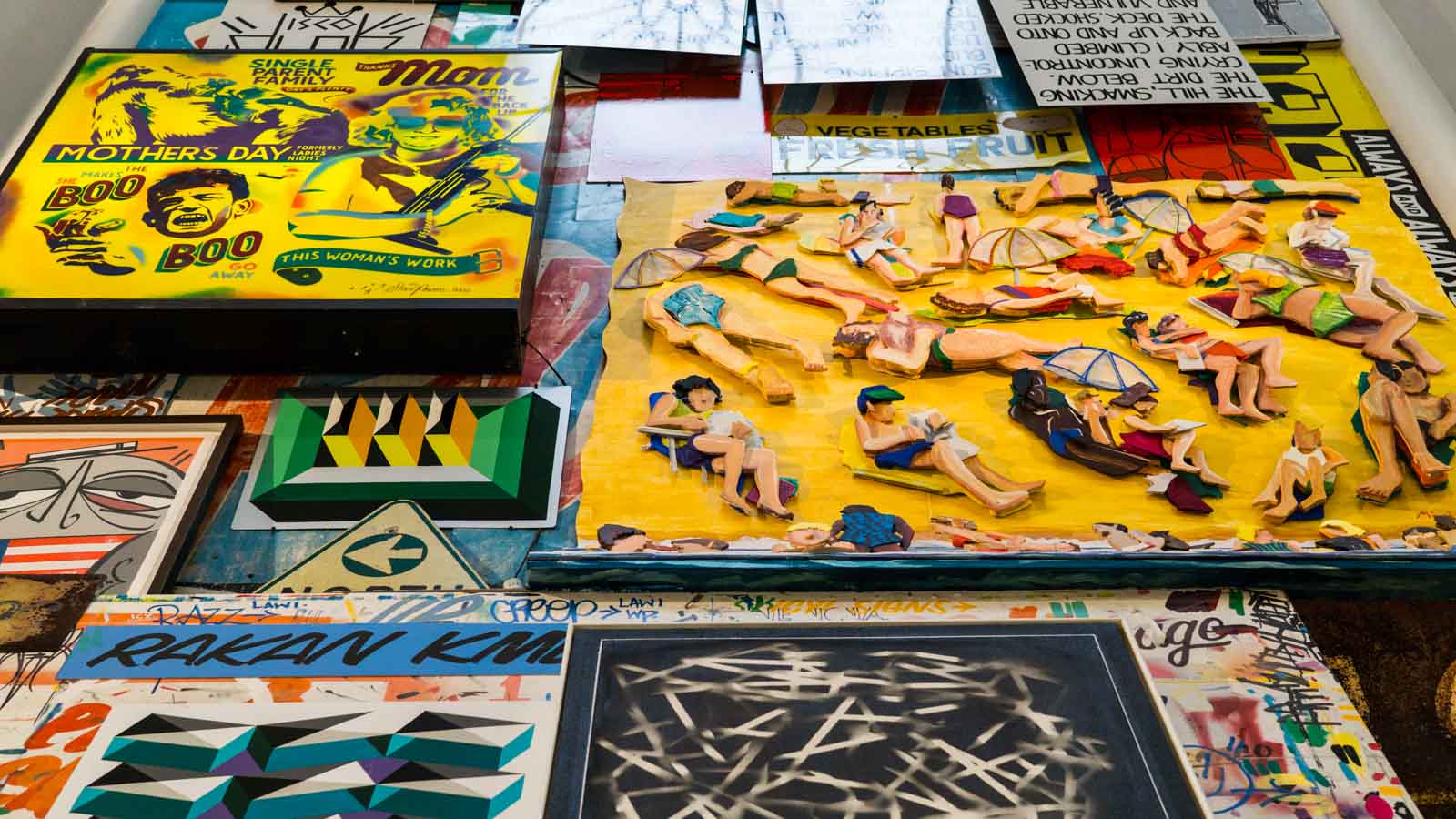Interview: Stephen ESPO Powers on Brooklyn Museum’s Coney Island Extravaganza
Three exhibitions across different galleries depict the wonder, charm and entrepreneurial spirit of NYC’s beach scene
Across an impressive three shows (opening today, 20 November 2015) Brooklyn Museum showcases the charm, spirit, strangeness and seediness that is New York’s Coney Island. “Coney Island: Visions of an American Dreamland, 1861–2008” displays 140 diverse works—from paintings of the seaside during the 1870s to Depression-era artworks to current-day creations by the likes of Swoon and NYC graffiti writing royalty Daze. Another show “Forever Coney: Photographs from the Brooklyn Museum Collection” features 42 images (some sweet, some sad) from the post–Civil War era to the 20th century.
The third show—”Coney Island Is Still Dreamland (To a Seagull)”—is a large-scale, site-specific installation by CH favorite, Brooklyn-based Stephen “ESPO” Powers. With a strong passion for the art of sign-painting, Powers has written “Love Letters” (a captivating blend of melancholy and devotion) in several cities in the States and internationally. After seeing signs in Coney Island fading and being replaced with cheap vinyl iterations, he started a program with Creative Time (called “The Dreamland Artist Club“) for which 25 artists and sign-painters worked with business-owners; repainting signs, murals and rides in the seaside town. It makes sense then, that Powers was asked to take part in the Brooklyn Museum’s show, and we spoke with him about how the impressive piece was created and what’s so special about Coney Island.

How are you feeling about the work now that you have a little distance from it? Or now that you’ve seen viewers’ reactions to it?
I feel like I gotta make more work. After I get a little distance from the work I realize, “Wow, there’s really so much more work that could be done and should be done” and I will continue to pursue that. It’s an ongoing process. It’s a lot of fun seeing it out in the wild.
Coney Island is obviously important to you, and you spent a bunch of time there with the community. How did you go about attempting to recreate the spirit or the scene of a place inside a gallery?
What I realized a long time ago is that we can romanticize Coney all we want, but at the end of the day, Coney is commerce. If you’re really going to be inside and be a regular at Coney, I think you’ve got to be a carny. They get their hands dirty. And what we did to really honor that core carny philosophy is set up a tower optical viewer, so you can best experience the work only if you’re willing to pay a quarter for 90 seconds of close-up viewing. So, the spirit of entrepreneurial pursuits and commerce and art are all on hand, and I think that’s the most Coney thing we could do.

Are those three things also your favorite facets of Coney?
No no, those are just the facts. You know, the ocean that comes in is just as much of a constant as the carnies working their trade and trying to get you to play games of chance or experience any of those things—for a tiny bit of money.
The piece is really big, you had a team—Justin Green, Matt Wright, Mike Levy, Dan Murphy, Mike Lee, Mimi Gross, Alexis Ross, Sean Barton, Eric Davis and Tim Curtis—all working together. Was it meticulously planned from the start or did you find yourselves going off on tangents and bouncing off each other?
We were really focused and proceeded in a really orderly direction from the start, but then it was all improvised. For us the best signs are painted one letter at a time, without really any forethought. Just in the moment.

Did you come across many problems that needed solving?
Every day there are problems to solve! There’s always something, when you’re painting signs and creating art—also in the confines of a museum’s schedule and their needs and wants to protect the rest of their beautiful collection. We saw problems every day, but we have a cumulative experience of about 190 years. We fight. We love. We’re family, we have rivalries and jealousies and eccentricities. But we have common loves and common goals.
There are three shows altogether in this Coney extravaganza. Is there a piece in one of the other exhibitions that particularly resonated with you?
There are so many. The honest joy of this started because when I saw the larger exhibition—how good it was—I wanted to be mad and jealous that I wasn’t in the original exhibition. Even before I got asked to do this corollary exhibition. Instead I was so overwhelmed and overjoyed at how great it was, how much there was—and so much I didn’t know. In the “Coney Island Visions” show, there is this really crazy handmade duck target game that’s all wrought-iron steel and it’s rusted and painted and it’s exactly the thing we started this conversation with: art and commerce coming together.

What’s going to happen with your piece after the show?
I imagine it traveling to fine museums all around the world, but we’ll see. It’s like Coney Island: today’s the day and it’s all we’ve got, so let’s do it.
The Brooklyn Museum‘s Coney Island exhibitions open today and will be on display through 13 March 2016. Stephen Powers’ show “Coney Island Is Still Dreamland (To a Seagull)” is supported by VH1 and RVCA’s Artist Network Program.
Images by Kevin Serai


















